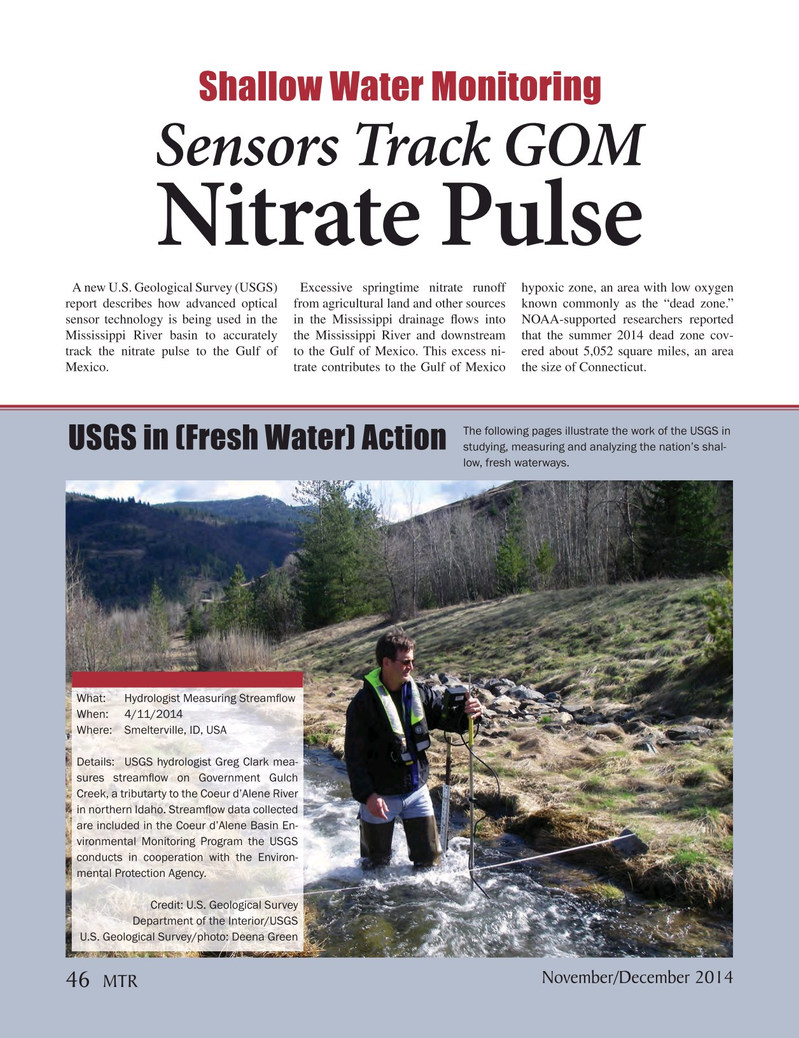
Page 46: of Marine Technology Magazine (November 2014)
Fresh Water Monitoring & Senors
Read this page in Pdf, Flash or Html5 edition of November 2014 Marine Technology Magazine
Shallow Water Monitoring
Sensors Track GOM
Nitrate Pulse
A new U.S. Geological Survey (USGS) Excessive springtime nitrate runoff hypoxic zone, an area with low oxygen report describes how advanced optical from agricultural land and other sources known commonly as the “dead zone.” sensor technology is being used in the in the Mississippi drainage ? ows into NOAA-supported researchers reported
Mississippi River basin to accurately the Mississippi River and downstream that the summer 2014 dead zone cov- track the nitrate pulse to the Gulf of to the Gulf of Mexico. This excess ni- ered about 5,052 square miles, an area
Mexico. trate contributes to the Gulf of Mexico the size of Connecticut.
The following pages illustrate the work of the USGS in
USGS in (Fresh Water) Action studying, measuring and analyzing the nation’s shal- low, fresh waterways.
What: Hydrologist Measuring Stream? ow
When: 4/11/2014
Where: Smelterville, ID, USA
Details: USGS hydrologist Greg Clark mea- sures stream? ow on Government Gulch
Creek, a tributarty to the Coeur d’Alene River in northern Idaho. Stream? ow data collected are included in the Coeur d’Alene Basin En- vironmental Monitoring Program the USGS conducts in cooperation with the Environ- mental Protection Agency.
Credit: U.S. Geological Survey
Department of the Interior/USGS
U.S. Geological Survey/photo: Deena Green
November/December 2014 46
MTR
MTR #9 (34-49).indd 46 MTR #9 (34-49).indd 46 12/9/2014 10:59:07 AM12/9/2014 10:59:07 AM

 45
45

 47
47
